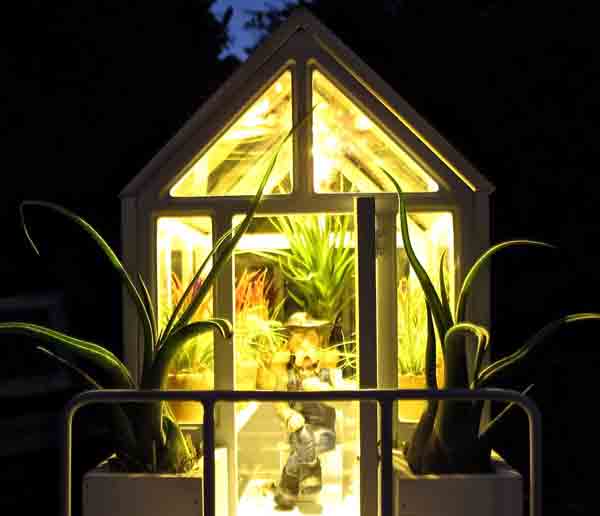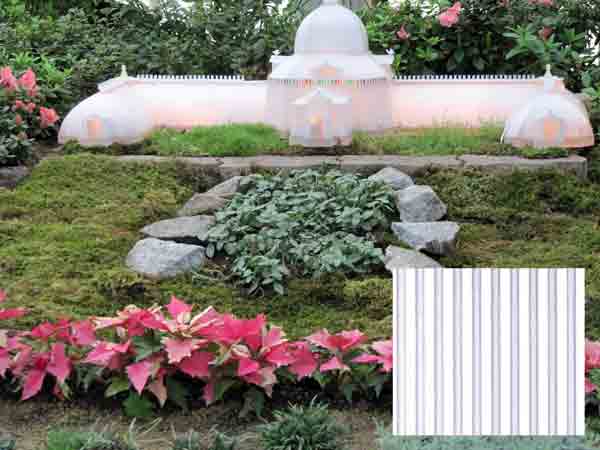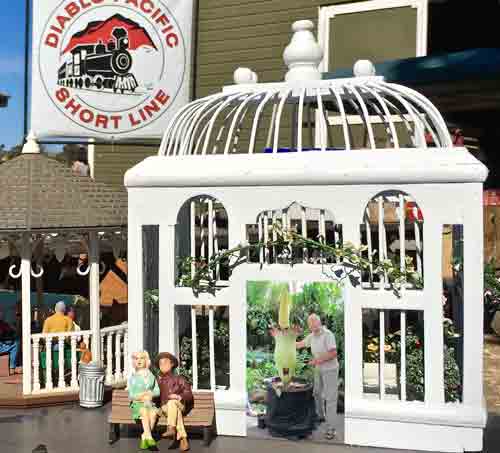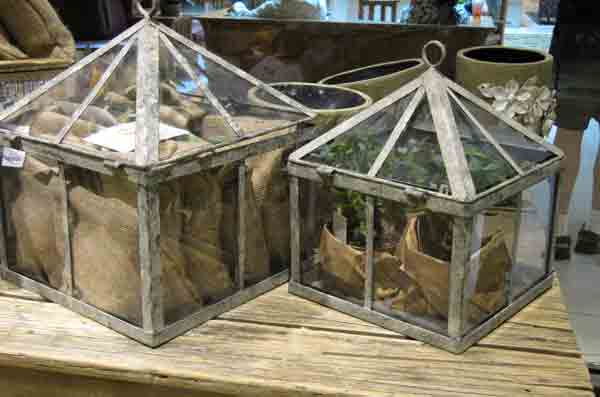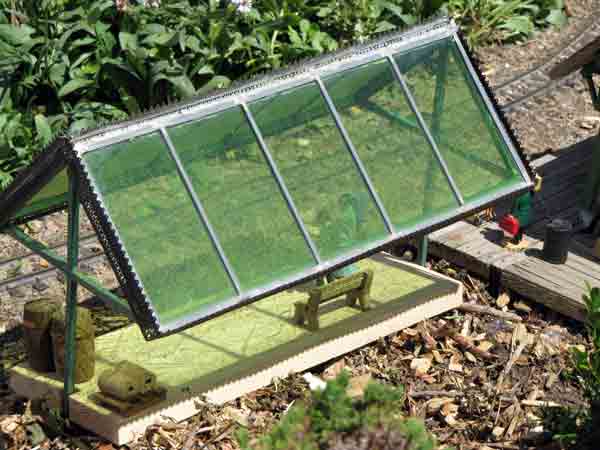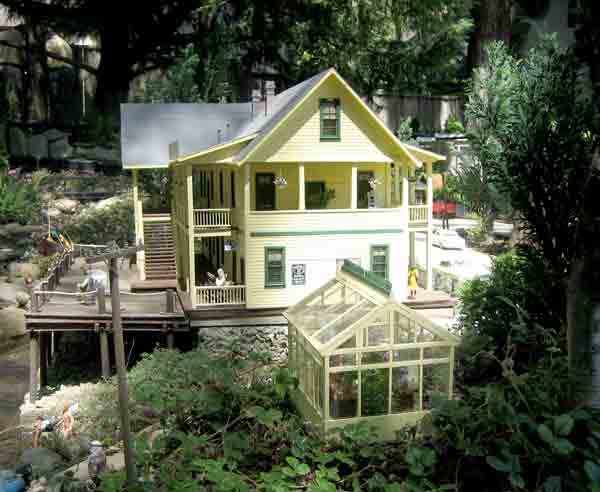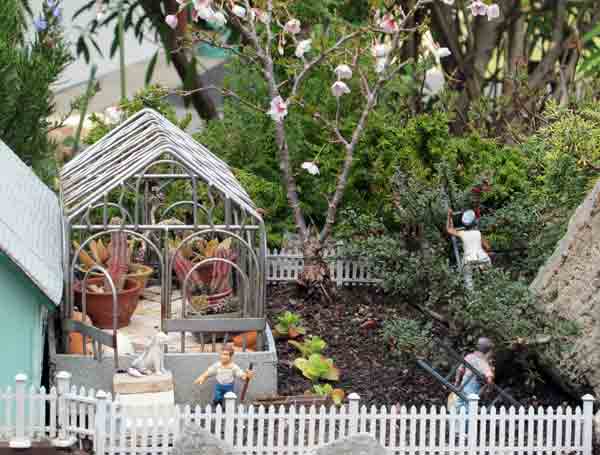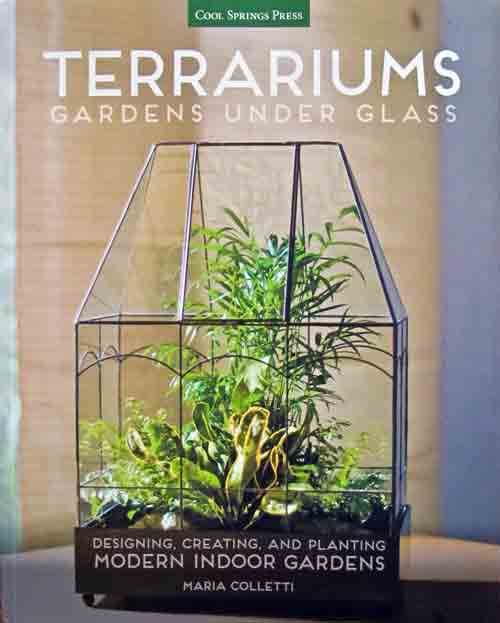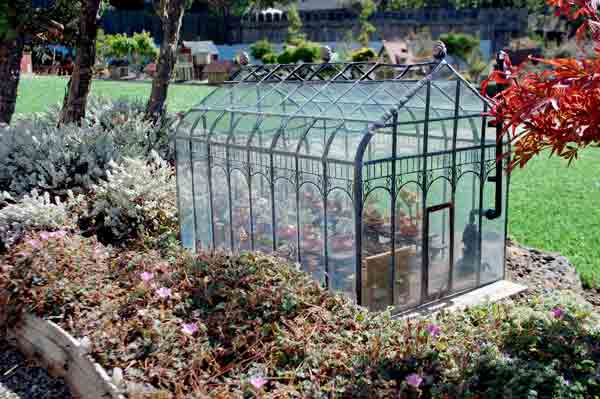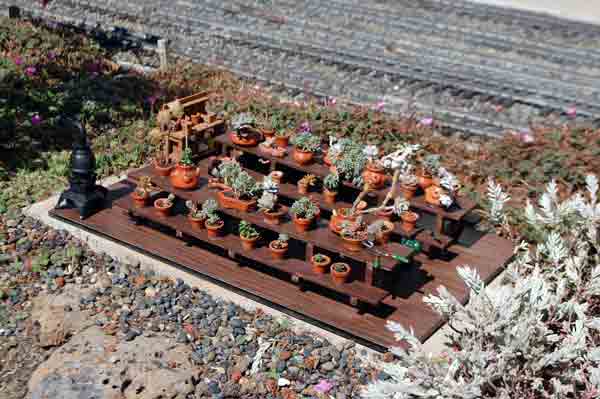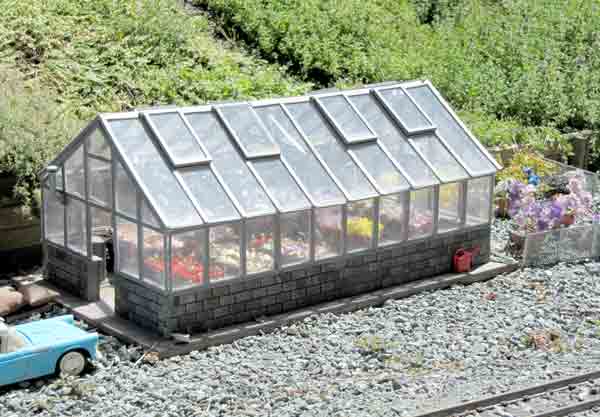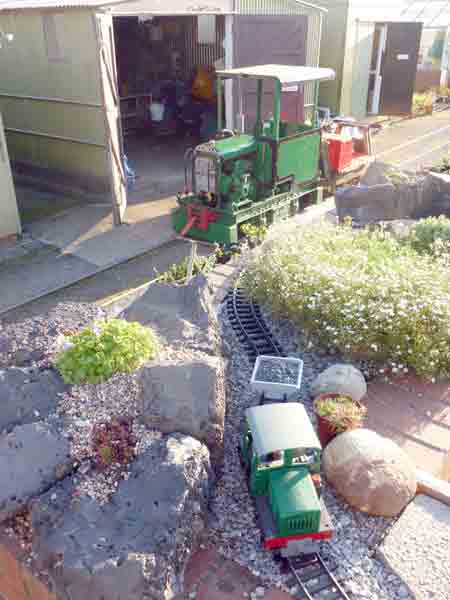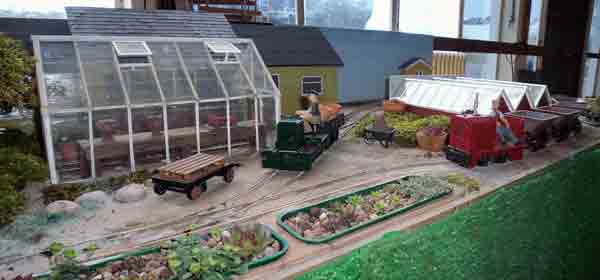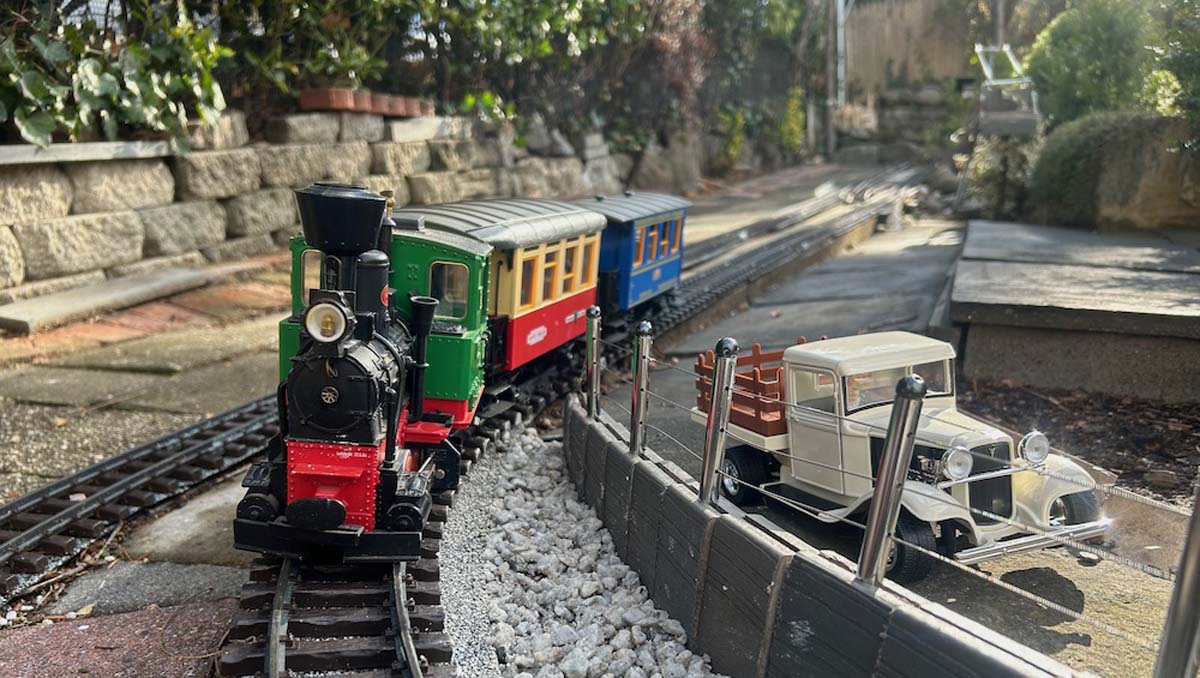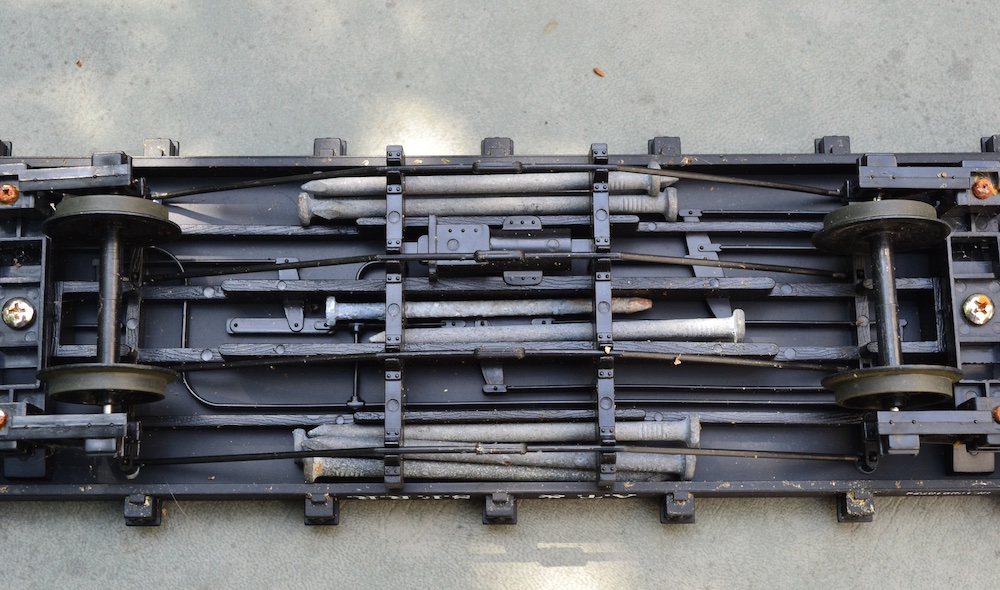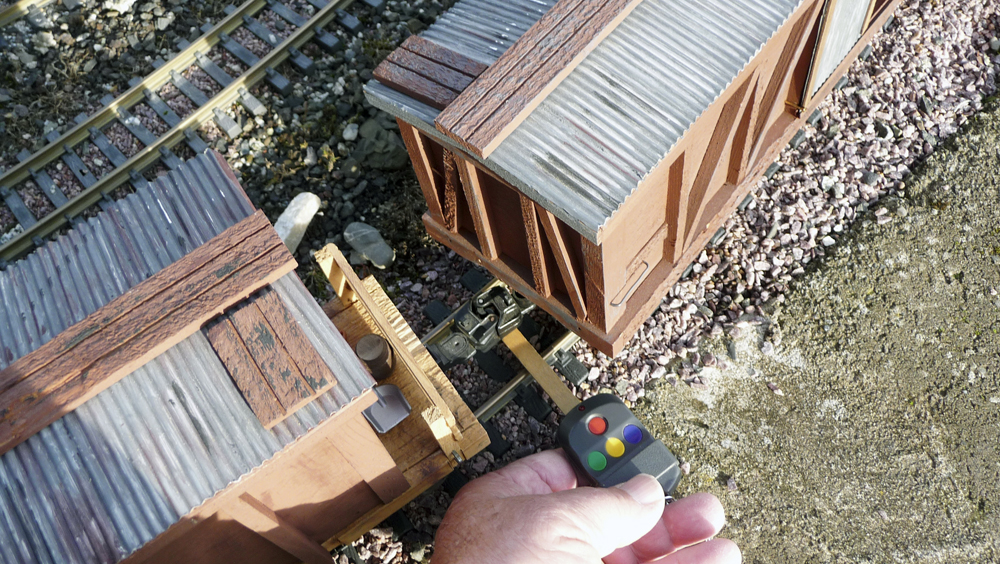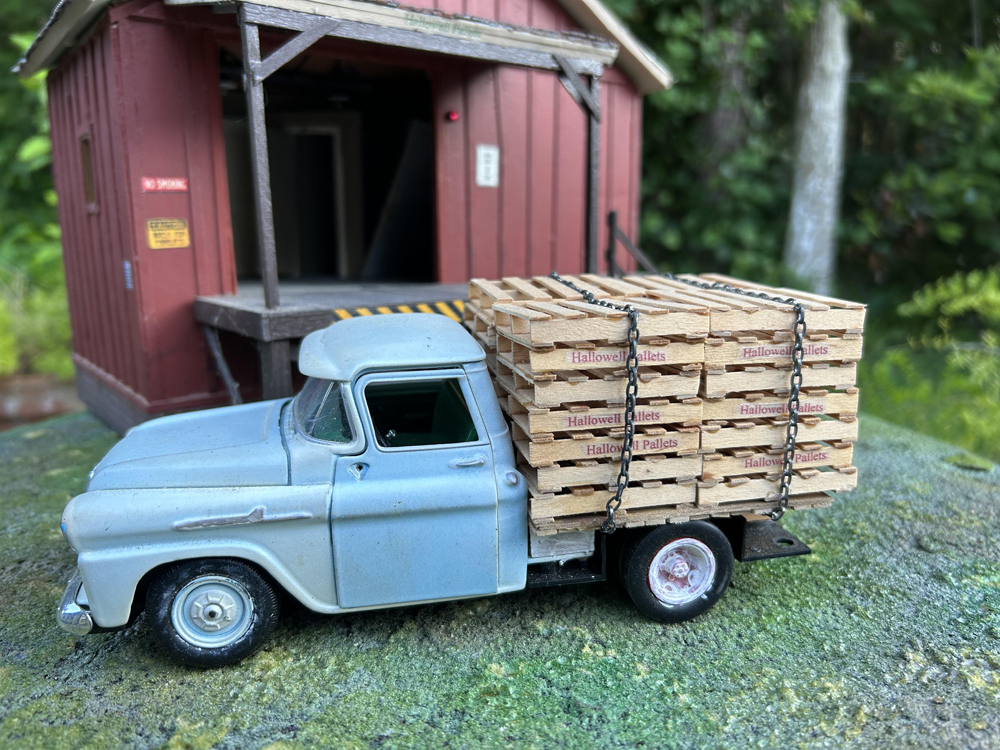Glasshouses invite us to visually “come on in.” Based on the following examples, you can model a style that will determine its location in your railway. If it’s a conservatory, place it in a park or by a nice home. A Quonset usually suggests a commercial enterprise. A small hobby kit goes near a house. In photo 1, we’re introduced to a newly unveiled piece of rolling stock: the traveling terrarium. Actually, it’s not such a novel idea—Romans built the first gardens on wheels in 30AD, when they wheeled planter boxes of healthful cucumber-like plants outside to get some sun.
Education, entertainment, and eats
Italians also built the first modern greenhouses, when manufactured glass became readily available. They called them orangeries, and built them for growing the popular citrus fruit, which needs heat. If there’s one thing that glass houses have taught us, it is that temperatures rise under glass or similar situations where sunrays penetrate the roof, heat up the contents, and hold much of the heat inside.
During Queen Victoria’s reign (mid 1800s), Englishmen used shipbuilders’ designs to erect spectacular glass conservatories with curved roofs, much like the Conservatory of Flowers in San Francisco (photo 2). These enormous greenhouses continue to amaze visitors and show them a glimpse of the tropics or other habitats from around the world.
It was at our local University of California Botanical Gardens that I learned about the Southeast Asian “corpse flower”—almost my size (inside the doorway in photo 3). In that photo, I show that some flowers can be quite large, albeit unusual. In modeling greenhouses, whether for nurseries that start seedlings or conservatories that grow tropical plants, we railroad gardeners may want to choose larger plants to sustain the retained heat under glass because larger plants can be prototypical.
Size also doesn’t matter much in the realm of greenhouse structures. We see small and large 1:1-scale greenhouses. The door is the key to showing the scale but there are ways to get around that issue, too. If it’s too big, sink the greenhouse into the ground a bit and call it a “pit house,” often built to prevent frost from killing plants.
Ways to glaze
You can glaze your greenhouse with an assortment of materials. The obvious advantage of a glass house is seeing all of the interior details (photo 5). Some plastics are quite transparent, too (photo 1). All glazing gets spotted by salts from hard water and dirt (it’s a garden).
If you don’t want to clean the glass or maintain plants and details inside, use translucent plastic. “1/24 Scale Corrugated Siding Patterned Plastic Sheets” from Plastruct appear to be similar to the glazing in photo 2, but stiffer.
It’s not uncommon for nursery and greenhouse owners to uncover their hot houses in the summer, then re-glaze them in the fall with plastic sheeting. Modeling this situation permits us to show off the plants better (photo 6). No glazing = no greenhouse effect + no dirty roof.
Plants alive
Succulents, like stonecrop and hen-and-chicks, are great because they retain water and take the heat, but they aren’t the only smart choice for little hothouses. See “Plant portraits” to learn about air plants.
Scale greenhouses and conservatory-like “Wardian cases” (photo 8) are sometimes built with a glass cover over a planting box, which may be filled with soil and planted with an assortment of plants to look like a garden. New York Botanical Garden terrarium designer Maria Colletti shows you how in her book, Terrariums: gardens under glass. Readers can follow the many illustrations and step-by-step instructions to plant mini gardens under glass. Find or build your ideal greenhouse. Make your guests lean over to see what’s inside.
Sources for scale greenhouses and kits
• Tumdee-Dollshouse-Miniatures sells kits of several styles: www.tumdee-dollshouse-miniatures.co.uk (photo 1)
• Malcolm’s Miniatures sells a 1:12 wooden kit that could easily be trimmed down to 1:24 scale or sunk into the ground as a pit house: www.malcolmsminiatures.co.uk
• Sunflower Glass Studio sells copper-framed and “antique glass” houses in traditional rectangular shape or octagonal-gazebo shape: http://sunflowerglassstudio.com/minaturebuildings.php
• Shop at local antique, garden, and thrift shops or department-store gift sections that sell birdcages (photo 3) and terrariums (photo 4)
• Check ebay.com, amazon.com, and craigslist.com for “miniature greenhouses”
Regional gardening reports
How have you modeled a scale greenhouse?
Jack Verducci
San Mateo, California, Zone 9-10
Showcasing succulents
I bought the glass house from a curio shop. I think it was meant to be a display case for miniatures. I modified it by cutting out the glass panes at the roof ridge to allow for ventilation. I used a glass-cutting tool and a Dremel-cutting wheel. It was difficult and I did create some cracks but figure real greenhouses have cracks too. It still gets pretty hot in there in the summer. The glass house is removable so it can be lifted off when the weather is hot. Benches are removable to make planting easier.
Bob Evans
Lafayette, California, Zone 9
Craft kit
I bought our greenhouse from a club member who was liquidating his collection of buildings. The kit greenhouse was in some disrepair so I put it back together with glue. I went to Michaels craft store and found miniature pots that seemed to be in scale. Michaels also had miniature artificial flowers. I had to cut down the stalks, but I filled the pots with silicone sealer and stuck the flowers in them, then glued the pots to the tops of the tables in the greenhouse. I added a few accessories (like a watering can and bug sprayer). The irony is that I think I paid $5-10 for the structure but ended up spending over $70 on the pots and flowers.
David Dawson and Bob Brook
York, United Kingdom, Zone 9a
Poppleton Community Railway Nursery
We are a volunteer group that was formed to try to take over the last English railway nursery for community use, while preserving its historic features, including the railway. After many problems, this was achieved in 2009, and the job of restoration and growing plants has carried on since then by what has become a registered charity.
History. English railways in the 20th century encouraged station staff to look after their stations, including beautiful flower displays; most ran competitions for the best-kept station. To provide plants for displays, railway companies ran their own nurseries. One such nursery was situated in the city of York and run by the London and North Eastern Railway. In 1941 the land in York was required for the war effort and the nursery was moved three miles to the village station at Poppleton, where land was available. During the war, most of the nursery was used for growing vegetables for the railway hotel and refreshment room in York. After the war, it gradually changed to growing plants for stations and for landscaping schemes, and also for displays for special events, like Royal visits and locomotive namings. The turmoil of British railway privatization in the 1990s led to a gradual run down, then (temporary) closing in 2006; it was the last railway nursery to survive.
Modeling. Volunteers take a model to shows to publicize the nursery. Track was handmade from bits available [see Online extra]. Buildings were put together to give the impression of the nursery, using materials on hand, including the main greenhouse. This is made of clear acrylic sheet glued into the main shape, with the framing then glued on using thin strips of white plastic. A detailed model of the engine shed, a hidden siding concealed in a model of our old potting shed, and our sunken greenhouse complete the scene. One of the features that seems to amuse the public is a hand-pushed skip [garden-waste container] wired as a shuttle, which runs backwards and forwards into the greenhouse.
Visiting. We welcome visitors to the nursery but prefer people to come on our open days. Details can be found on our website: www.poppletonrailwaynursery.co.uk
Don’t miss the extended extra version of this railway!





